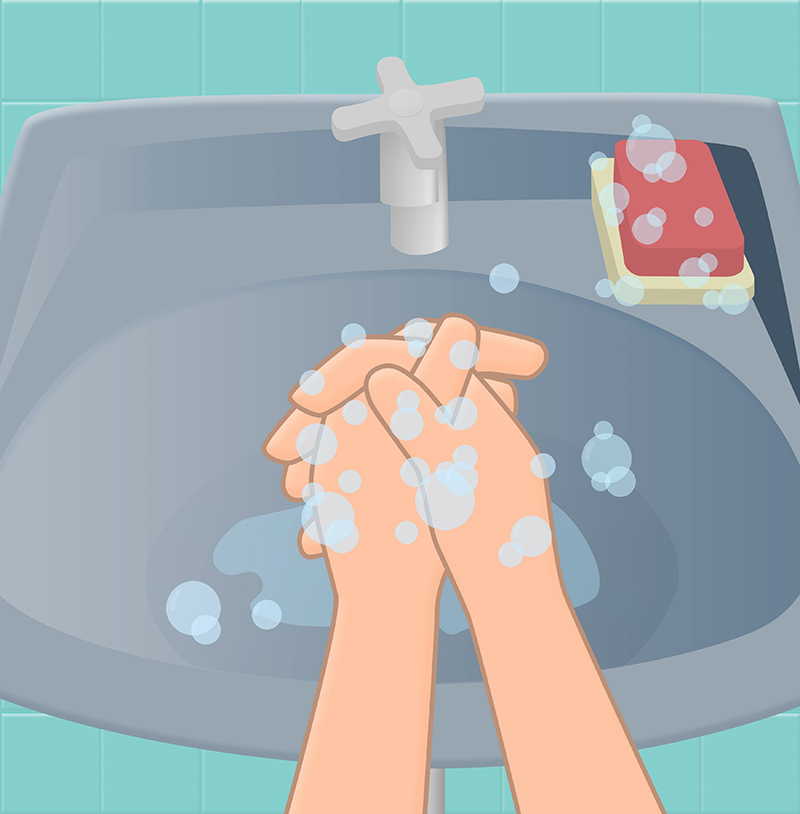With the international Global Handwashing Day having elapsed (October 15th), it’s now time for the informational – Handwashing Awareness.
Four Principles of Handwashing
- Wash when dirty
- Wash before eating
- Do not cough or sneeze into hands
- Do not put fingers in eyes, nose or mouth
The CDC has termed handwashing a “do it yourself vaccine”, placing special importance in doing it correctly, especially in this age of SARS-COV-2 pandemic and its variants.
As such, these five actions follow naturally from the above principles and should be memorized without effort…
The Five Steps
- Wet
- Lather
- Scrub
- Rinse
- Dry
…but should also be done correctly, nor forgetting to wash extensively, for no less than 20 seconds (average is 6), cleaning front and back of the hands, in between the fingers, and underneath the nails with a good, solid lather. Dry always with a clean towel. Incredibly enough, when speaking of these principles and steps, only 5% of people worldwide wash their hands correctly.
The Filthy History of Handwashing
- 400 BCE. Greek historian Thucydides is the first to suggest that disease spfreads from one person to another, that is, it’s contagious.
- 1546 ACE. Italian poet and scholar Girolamo Fracastoro hints at the very first germ theory, speaking of small particles or spores which transmit disease.
- 1846 ACE. Born in 1818 in Hungary, doctor Ignaz Philipp Semmelweis pioneered antiseptic procedures and became the father of hand hygiene. Working in a hospital Ward., he realized mid-wife maternity wards reported far fewer deaths of mothers when giving birth than doctor-student run wards. He realized that most doctors-students went directly to wards after performing autopsies… without washing their hands, of course.
- 1854 ACE. Stationed in Italy during the Crimean War, Ms. Florence Nightingale became a sanitation champion, implementing handwashing and other procedures to fight miasmas, which at the time were believed to be floating foul odors that were at the root of disease.
- 1860 ACE. Louis Pasteur begins the studies and dedication that lead to vaccination and pasteurization breakthroughs.
- 1982 ACE. In spite of many doctors and scientists’ best efforts, in the US it wasn’t until a string of foodborne outbreaks and healthcare infections raised public concern that the CDC published the first hand hygiene guideline, endorsing hand hygiene as a key element in curbing the spread of disease.
- Today. The CDC reported that only 31% of men and 65% percent of women wash their hands after using a public restroom. Or that only 20% wash their hands before preparing food, which doubles to a measly 39% before eating food. Now we know, for example, that 80% of contagious disease are transferred by touch. On average, the human hand comes into contact with 300 surfaces every 30 minutes. Translated to germs, that’s 840,000!!!
Happy hands are healthy hands. And happy hands make for healthy homes.
Tell everyone, but especially kids.
Sources:
https://nationaltoday.com/national-handwashing-awareness-week/
https://allportablesinks.com/blogs/news/17-handwashing-facts-and-statistics


